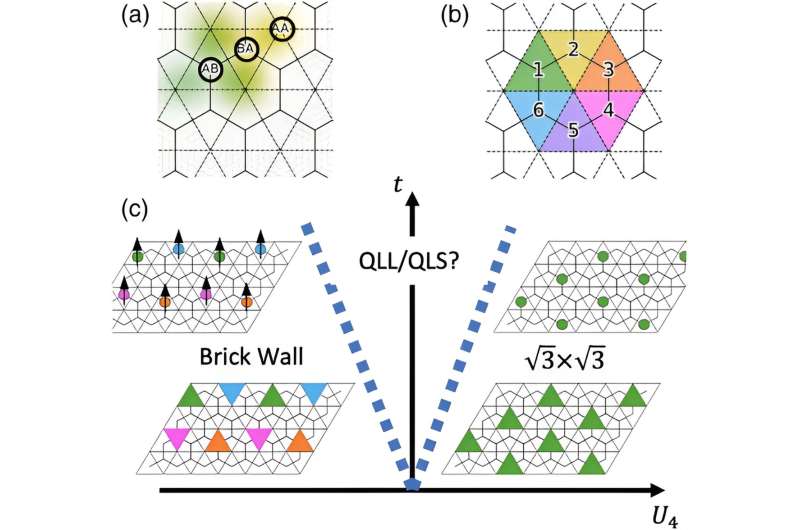This article has been reviewed according to Science X's editorial process and policies. Editors have highlighted the following attributes while ensuring the content's credibility:
fact-checked
peer-reviewed publication
trusted source
proofread
Physicists realize fractionalization without a magnetic field

On the dream list of many condensed matter physicists is observing fractionalization, the phenomena of a collective state of electrons carrying a charge that is a fraction of the electron charge, without a magnetic field.
"This is not to say the electron itself can be split into pieces," said Eun-Ah Kim, professor of physics in the College of Arts and Sciences (A&S). "Rather, a group of electrons can act like it carries a deficit of charge that is only a fraction of an electron charge. Such an observation is a pinnacle of non-trivial effect strong interaction among electrons can manifest."
Achieving these states carrying a fractional charge is not only of intellectual interest, Kim said; it can be useful for new technological applications such as quantum computing.
Researchers in the Kim Group predict a way to achieve fractionalization without a magnetic field, a theory they detail in "Fractionalization in Fractional Correlated Insulating States at n ± 1/3 Filled Twisted Bilayer Graphene," published in Physical Review Letters. Dan Mao, a Bethe/Wilkins/Kavli Institute at Cornell (KIC) postdoctoral fellow in the Laboratory of Atomic and Solid State Physics (LASSP), is lead author. Kim and doctoral student Kevin Zhang are co-authors.
In past research, physicists have achieved fractionalization using magnetic fields to suppress kinetic energy, amplifying interaction effects and achieving the celebrated fractional quantum Hall effect in two-dimensional systems. But since strong magnetic fields are only available in specialized labs, Kim said, there has been much interest in finding strategies to realize fractionalization without a magnetic field.
The Kim Group, which makes progress using out-of-the-box perspectives, saw a unique opportunity for leveraging the geometric thinking in a twisted bilayer graphene (TBG) lattice to predict new effects. It's a novel approach; using geometric insights is common in studies of magnetic systems, Kim said, but has not been used before to study charge distribution because often electron wave functions are isotropic clouds centered at lattice sites.
"Among a very peculiar aspect of the life of electrons in twisted bilayer graphene is the fact that the electron wave function cannot be placed on one site, but it is constrained to be spread over multiple moiré lattice sites," Kim said. "Moreover, the wavefunction spread takes an anisotropic, three-leaf clover shape."
Using these moiré graphene systems, the researchers propose the existence of fractional correlated insulator phases characterized by certain properties:
- Excitations (or particles) carry fractional electric charges, which is unusual and a hallmark of fractionalization.
- Some of the fractional excitations are "fractonic," meaning that they can only move in certain directions.
- An emergent symmetry, which plays a crucial role in unifying the behavior of fractional excitations in these phases, has been identified.
"Our discovery presents the field with a first physical setting for exploring the new and novel theoretical concepts of emergent symmetries and fractonic dynamics," Kim said. She and the other researchers are collaborating with experimental colleagues to confirm the predictions experimentally. They report promising preliminary results.
"We have only scratched the surface," Kim said. "By having a concrete setting to study new theoretical concepts, we can explore measurable properties of the new concepts such as emergent symmetries and fractonic dynamics."
More information: Dan Mao et al, Fractionalization in Fractional Correlated Insulating States at n±1/3 Filled Twisted Bilayer Graphene, Physical Review Letters (2023). DOI: 10.1103/PhysRevLett.131.106801
Journal information: Physical Review Letters
Provided by Cornell University





















